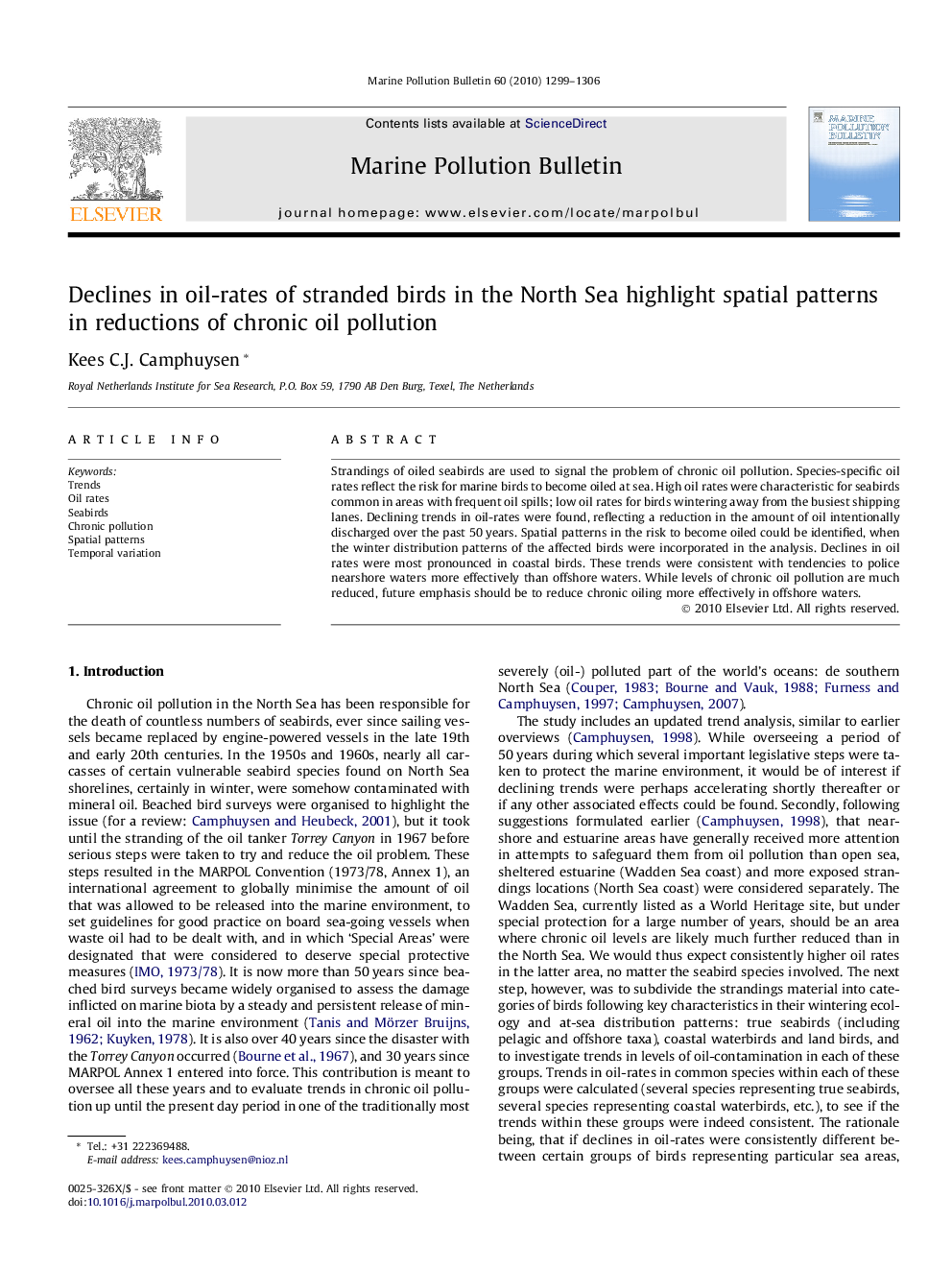| Article ID | Journal | Published Year | Pages | File Type |
|---|---|---|---|---|
| 6362579 | Marine Pollution Bulletin | 2010 | 8 Pages |
Strandings of oiled seabirds are used to signal the problem of chronic oil pollution. Species-specific oil rates reflect the risk for marine birds to become oiled at sea. High oil rates were characteristic for seabirds common in areas with frequent oil spills; low oil rates for birds wintering away from the busiest shipping lanes. Declining trends in oil-rates were found, reflecting a reduction in the amount of oil intentionally discharged over the past 50Â years. Spatial patterns in the risk to become oiled could be identified, when the winter distribution patterns of the affected birds were incorporated in the analysis. Declines in oil rates were most pronounced in coastal birds. These trends were consistent with tendencies to police nearshore waters more effectively than offshore waters. While levels of chronic oil pollution are much reduced, future emphasis should be to reduce chronic oiling more effectively in offshore waters.
